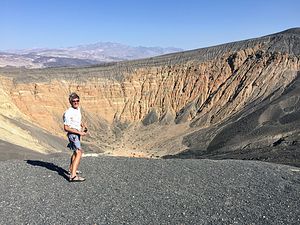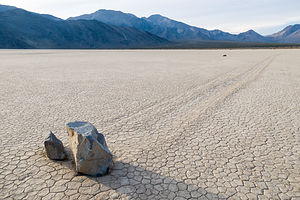- Home
- About
- Map
- Trips
- Bringing Boat West
- Migration West
- Solo Motorcycle Ride
- Final Family XC Trip
- Colorado Rockies
- Graduates' XC Trip
- Yosemite & Nevada
- Colorado & Utah
- Best of Utah
- Southern Loop
- Pacific Northwest
- Northern Loop
- Los Angeles to NYC
- East Coast Trips
- Martha's Vineyard
- 1 Week in Quebec
- Southeast Coast
- NH Backpacking
- Martha's Vineyard
- Canadian Maritimes
- Ocracoke Island
- Edisto Island
- First Landing '02
- Hunting Island '02
- Stowe in Winter
- Hunting Island '01
- Lake Placid
- Chesapeake
- Provincetown
- Hunting Island '00
- Acadia in Winter
- Boston Suburbs
- Niagara Falls
- First Landing '99
- Cape Hatteras
- West Coast Trips
- Burning Man
- Utah Off-Roading
- Maui
- Mojave 4WD Course
- Colorado River Rafting
- Bishop & Death Valley
- Kauai
- Yosemite Fall
- Utah Off-Road
- Lost Coast
- Yosemite Valley
- Arizona and New Mexico
- Pescadero & Capitola
- Bishop & Death Valley
- San Diego, Anza Borrego, Joshua Tree
- Carmel
- Death Valley in Fall
- Yosemite in the Fall
- Pacific Northwest
- Utah Off-Roading
- Southern CA Deserts
- Yosemite & Covid
- Lake Powell Covid
- Eastern Sierra & Covid
- Bishop & Death Valley
- Central & SE Oregon
- Mojave Road
- Eastern Sierra
- Trinity Alps
- Tuolumne Meadows
- Lake Powell Boating
- Eastern Sierra
- Yosemite Winter
- Hawaii
- 4WD Eastern Sierra
- 4WD Death Valley +
- Southern CA Deserts
- Christmas in Tahoe
- Yosemite & Pinnacles
- Totality
- Yosemite & Sierra
- Yosemite Christmas
- Yosemite, San Diego
- Yosemite & North CA
- Seattle to Sierra
- Southwest Deserts
- Yosemite & Sierra
- Pacific Northwest
- Yosemite & South CA
- Pacific Northwest
- Northern California
- Southern Alaska
- Vancouver Island
- International Trips
- Index
- Tips
- Books
- Photos/Videos
- Search
- Contact
Death Valley - The Racetrack, CA
Monday, September 18, 2017 - 5:30pm by Lolo
250 miles and 5.5 hours from our last stop - 1 night stay
Travelogue

Normally, we would have entered Death Valley from Big Pine and driven the Death Valley / Big Pine Road to the start of Racetrack Road near the Ubehebe Crater, but unfortunately storms had taken out many of the backroads in Death Valley, including the one in from Big Pine.
Instead, we had to come in via the Panamint Springs entrance much further to the south. However, this would allow us to stop at the Furnace Creek Visitor Center to get information on 4WD road conditions in the park to make sure we were not embarking on something foolish.

Now, which son to give the responsibility of calling a Death Valley ranger to search for his missing parents if they didn’t call in 2 days? I chose Tommy for two reasons. First, he is not nearly the worrywart that Andrew is, and secondly, he is always doing things to worry me, like climbing El Cap or skiing down Mt. Rainier, so I figured I would give him a chance to be on the other side of the worry equation.
With the ranger’s blessings as to our intentions, we headed north on Scotty Castle Road to the Ubehebe Crater, where Racetrack Road begins. Ubehebe Crater, which is a half-mile wide and 750 feet deep, is too spectacular to just pass by. We have hiked to the bottom of it on a previous trip, but this time we were just stopping at the rim for a quick photo. The wind was so strong it almost blew our door off.
 Lolo atop the GrandstandConditions were great on Racetrack road, so we were able to move along at a good 20 mph pace. After our drive to Coyote Flat yesterday, this truly felt like a racetrack. After 19 miles of incredible natural desert scenery, we came upon a bit of a man-made attraction at Teakettle Junction, where the sign marking the junction of Racetrack and Hunter Mountain is strung with dozens of old teakettles.
Lolo atop the GrandstandConditions were great on Racetrack road, so we were able to move along at a good 20 mph pace. After our drive to Coyote Flat yesterday, this truly felt like a racetrack. After 19 miles of incredible natural desert scenery, we came upon a bit of a man-made attraction at Teakettle Junction, where the sign marking the junction of Racetrack and Hunter Mountain is strung with dozens of old teakettles.
No one quite knows how this tradition began, but rumor has it that kettles were hung to show early settlers that there was water nearby. Another theory is that it was considered good luck to leave a kettle with a message on or in it for fellow travelers to read. When the number of teakettles get to be too much, Rangers remove them, and the process begins all over again.
For this afternoon, we continued straight for another 6 miles to the Racetrack and the primitive campground just beyond. Tomorrow we would return to this junction and take Hidden Valley Road over Hunter Mountain.
Before long, we arrived at the Grandstand Parking Area at the northern end of the Racetrack Playa (dry lakebed), which at 3 miles long and 2 miles wide, was much larger than I had envisioned. Rising from the playa is a large, dark outcrop of quartz monzonite, which is actually the tip of a mountain buried long ago by material eroded from the surrounding mountains. It looked like an island in a sea of clay. We just had to walk out to it. In fact, Herb even made me climb to the top of it, so he could get a photo of me silhouetted against the evening sky.
 Moving rock and its trailAfterwards, we continued driving another two miles to another parking area nearer to the “moving” rocks, which the Racetrack is famous for and walked out onto the playa to visit some of them. We could easily find the culprits by the tracks they left behind in the clay. It was incredible.
Moving rock and its trailAfterwards, we continued driving another two miles to another parking area nearer to the “moving” rocks, which the Racetrack is famous for and walked out onto the playa to visit some of them. We could easily find the culprits by the tracks they left behind in the clay. It was incredible.
Scientists have been studying this strange rock behavior for decades and think they have finally solved the mystery. The theory is that after a rain, the surface of the playa, which is clay, becomes quite slippery. Accompanying that loss of friction with the strong winds that blow out of the Saline Valley, sometimes as high as 70 mph, and you get a sufficient force to actually move a rock across the slick surface, some of which are as large as 1,000 pounds. Some of them have moved as much as several hundred feet, leaving long tracks behind them showing the direction of their journey.
Using GPS measurements, scientists have mapped, measured, and even named 162 rocks. Kitty weighs in at 1,275 pounds and is 22 inches tall, while Hannah is a measly 1 pound. Apparently, rocks are female.
 Lolo Racing the RockNo camping is allowed in the parking areas alongside the playa, so we continued on to the primitive campground, just two miles beyond, where there are a half a dozen or so places to camp, only one of which was occupied.
Lolo Racing the RockNo camping is allowed in the parking areas alongside the playa, so we continued on to the primitive campground, just two miles beyond, where there are a half a dozen or so places to camp, only one of which was occupied.
The theory of the strong winds moving the rocks after a rain was confirmed in our minds by the fact that even the outhouse was chained down to prevent it from moving. I would love to put a GPS on that untethered and see how far it moves.
The next morning we drove back out from whence we came and stopped once more to walk out on the playa. I tend to get a little antsy without a lot of physical activity, so Herb suggested I relieve some of my pent up energy by running around the “racetrack.” Doing the whole perimeter would have been 10 miles, requiring more energy than I had pent up, so I satisfied myself by running a 3-mile loop around the Grandstand.
We said goodbye to Kitty and Hannah and continued on back to Teakettle Junction, this time taking the road towards Hunter Mountain, with the intention of getting to Saline Valley Warm Springs to camp that night.
Description
 Pretty big rock to moveBecause of its remote location, few visitors get to see the famous Death Valley Racetrack, where rocks mysteriously move across the dry lakebed on their own accord. Although no one has actually seen the rocks move, they are known to move because of the trails they leave behind them. After studying the phenomenon for decades, scientists now believe they have solved the mystery. The surface of the lakebed is a fine clay that becomes very slippery when wet. After a rain, heavy winds as high as 70 mph blow the rocks across the slick surface. A 4-wheel drive vehicle is needed to reach the Racetrack, which is 27 miles past Ubehebe Crater on a rough dirt road.
Pretty big rock to moveBecause of its remote location, few visitors get to see the famous Death Valley Racetrack, where rocks mysteriously move across the dry lakebed on their own accord. Although no one has actually seen the rocks move, they are known to move because of the trails they leave behind them. After studying the phenomenon for decades, scientists now believe they have solved the mystery. The surface of the lakebed is a fine clay that becomes very slippery when wet. After a rain, heavy winds as high as 70 mph blow the rocks across the slick surface. A 4-wheel drive vehicle is needed to reach the Racetrack, which is 27 miles past Ubehebe Crater on a rough dirt road.
- ‹ previous
- 5 of 8
- next ›
Death Valley - The Racetrack location map in "high definition"
Javascript is required to view this map.
